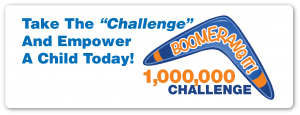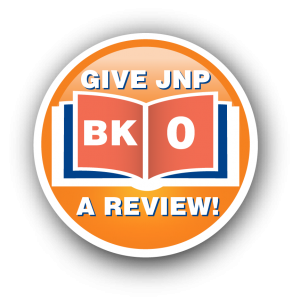Kids Photo Gallery | Kids Art Gallery | Kids Comments | Kids: Self-Esteem Statistics | Kids: Bullying Statistics | Parenting Tips: Kids Empowerment | Hot Topics | Supportive Research: Kids Healthy Self-Esteem | Bullying Has Got To Go Research & Resources
 The JNP Project’s core mission is bolstered by a backbone of research data and statistics that support a powerful proposition: nurturing healthy self-esteem (values-based social and emotional learning) in young children creates lifelong benefits.
The JNP Project’s core mission is bolstered by a backbone of research data and statistics that support a powerful proposition: nurturing healthy self-esteem (values-based social and emotional learning) in young children creates lifelong benefits.
 Noted below is just a small sampling of our amazing research-based resources (in five topic areas) that JNP consulted while creating our books series, and toolbox amenities that nurture character, courage, and confidence in kids (5-12+)! Discover your inner awesome. It is positively empowering!™
Noted below is just a small sampling of our amazing research-based resources (in five topic areas) that JNP consulted while creating our books series, and toolbox amenities that nurture character, courage, and confidence in kids (5-12+)! Discover your inner awesome. It is positively empowering!™
Links to content on this page below: Bullying/Cyber-Bullying | Character Education | Self-Esteem | Social Emotional Learning (SEL) | Values/Virtues | Self-Esteem Statistics
2018-2018 NATIONAL ABCD STUDY: Currently gathering data on how we nurture our children and the outcomes accordingly…
The Adolescent Brain Cognitive Development (ABCD) Study will enroll 10,000+ healthy children and follow them from ages 9 to 10 into early adulthood to understand how children’s experiences affect brain development and other aspects of their lives—including academic achievement, social development, and behavioral and overall health. www.abcdstudy.org
BULLYING / CYBER-BULLYING
“Bullies and Victims: Information for Parents” by Kari A. Sassu, Ms.Ed.; Mahri J. Elinoff, M.A.; Melissa A. Bray, Ph.D., NCSP; and Thomas J. Kehle, Ph.D. University of Connecticut (2004, National Association for School Psychologists)
JNP says: This report on bullying outlines basic facts about bullying, describes warning signs of possible bullying occurrences (as initiated by the bully and experienced by the victim), and suggests actions to address and eliminate bullying.
“Bullying in Schools: The Power of Bullies and the Plight of Victims” by Jaana Juvonen and Sandra Graham (2013, University of California, Los Angeles)
JNP says: The research conclusions of these two researchers are often cited in other publications and featured on talk shows. When interviewed, Professor Juvonen makes a point of correcting an incorrect assumption about bullies: contrary to popular belief, bullies usually have high self-esteem. The problem is that this sense of self is inflated and based on dominating others.
“Cyberbullying Warning Signs: Red Flags that a Child Is Involved in Cyberbullying” by Sameer Hinduja, Ph.D. and Justin W. Patchin, Ph.D. (Cyberbullying Research Center)
JNP says: This helpful March 2015 research-based summary on cyberbullying states: “Cyberbullying impacts at least one out of every five middle and high schools students. Many of those who experience it don’t tell anyone. If a child displays any of these signs, he or she might be involved. However, not all youth who are cyberbullied or who cyberbully others will display these signs, and some who do show these signs may have other problems in their lives that should be addressed. Take the time to investigate further if you see any of these red flags among the youth you care for.”
“A Content Analysis of Youth Internet Safety Programs: Are Effective Prevention Strategies Being Used?” by Lisa M. Jones, Kimberly J. Mitchell, and Wendy A. Walsh (2014, Crimes Against Children Research Center, December)
JNP says: After four different Internet safety education (ISE) programs were evaluated, the authors report that despite such efforts “Unfortunately, we know little about what educational messages make a difference in problems such as cyberbullying, sexting, or online predators… Results indicated that ISE programs are not typically using educational strategies known to be most effective.”
“Indicators of School Crime and Safety, 2012” by Simone Robers, Jana Kemp, Jennifer Truman, and Thomas D. Snyder (National Center for Education Statistics/Bureau of Justice Statistics—U.S. Department of Education and U.S. Department of Justice Programs)
JNP says: This reputable and reliable source of research statistics on school bullying is often quoted in other publications and media coverage about bullying.
“Online Harassment in Context: Trends From Three Youth Internet Safety Surveys (2000, 2005, 2010)” by Lisa M. Jones, Kimberly J. Mitchell, and David Finkelhor (2013, University of New Hampshire)
JNP says: This summary, provided by the researchers/authors, provides trustworthy data (and avoids unfounded rumors) on the rise of online bullying: “Because of concern that aggressive behavior and bullying have transferred to electronic media, surveys have begun to assess this problem as well. The Youth Internet Safety Survey (YISS) asked a representative sample of US Internet using youth about experiences of being harassed online. Rates increased from 6% in 2000 to 9% in 2005 to 11% in 2010, an increase of 83% over the decade.”
“Review of School Climate Research” by Amrit Thapa, Jonathan Cohen, Shawn Guffey and Ann Higgins-D’Alessandro (2013, Review of Educational Research)
JNP says: That school climate is an essential focus to create safe (and bully-free), nurturing, and stimulating learning environments is certain. However, not all efforts to do so produce significant positive results. This impressive research review, which “focuses on five essential dimensions of school climate—Safety, Relationships, Teaching and Learning, Institutional Environment, and the School Improvement Process,” reviews and critiques many school climate policies and offers recommendations for other school climate researchers and educators. (Also an excellent resource for Social and Emotional Learning. See other SEL resources below.)
“School Climate and Bullying Prevention” by Jonathan Cohen and Jo Ann Freiberg (2013, National School Climate Center)
JNP says: Two powerful highlights from this research study are especially helpful to parents and educators: 1.) “School climate is at its core about healthy, positive and connected relationships. In a real and concrete way, the ultimate remedy for bullying, no matter how it is defined, is to create school climates that are not supportive of any kind of mean-spirited behaviors, including but not limited to bullying and harassment. Consequently, true bullying prevention is identical to school climate improvement.”; and 2) “Today, most PK–12 schools’, districts’, and states’ so‐called bullying prevention efforts are devoted to implementing short-term instructional lessons and/or programs that have minimal or no positive effect on truly preventing bullying… it is not surprising that mean-spirited behaviors including but not limited to bullying and and harassment continue.”
“Trends in Bullying and Peer Victimization” by David Finkelhor (2014, Crimes Against Children Research Center)
JNP says: In this report, the researcher summarizes trends from youth surveys that have tracked bullying. Surprisingly, his findings show “declines in bullying and peer victimization, some of it remarkably large, especially over the period since the mid 1990s. More recent trends, since 2007, also show some declines, but somewhat less dramatic.”
“Understanding Bullying—Fact Sheet” by National Center for Injury Prevention and Control, Division of Violence Prevention/U.S. Department of Health and Human Services (2012)
JNP says: This is a superb and concise two-page fact summary of youth bullying basics.
“What Can Be Done About School Bullying?: Linking Research to Educational Practice” by Susan M. Swearer, Dorothy L. Espelage, Tracy Vaillancourt, and Shelley Hymel (2010)
JNP says: “In this article, the authors review research on individual, peer, and school contributions that may be critical factors for enhancing efforts to address bullying among students. The impact of school-based anti-bullying programs and the challenges currently facing educators and researchers in this area are discussed. The article concludes with a proposal for a broader, ecologically based model of school bullying based on the emerging literature.”
CHARACTER EDUCATION
“Are We Raising Caring Kids?” (Infographic) by the Making Caring Common Project (2014, Harvard University)
JNP says: The startling results of 10,000 youth recently surveyed is that “youth appear to be more focused on success than concern for others.” (See the article, “The Children We Mean to Raise,” below for the full report behind this infographic.)
“Character Education: Forgiveness” by The Teachers Place
JNP says: Great for parents, grandparents, teachers, and all adults who love books, kids, and character. Check out this list of books with forgiveness theme for elementary, middle, and secondary schools.
“The Children We Mean to Raise” by the Making Caring Common Project (2014, Harvard University)
JNP says: This is the full, eye-opening report in which the researchers “asked youth to rank what was most important to them: achieving at a high level, happiness (feeling good most of the time), or caring for others. Almost 80% of youth picked high achievement or happiness as their top choice, while roughly 20% selected caring for others…And here’s the irony: the focus on happiness, and the focus on achievement…doesn’t appear to increase either children’s achievement or their happiness.” Widespread media coverage of this report’s findings has resulted in parents and educators looking closer at family life and education systems that—deliberately or unconsciously—incubate the values and support the priorities reflected by a majority of the surveyed kids.
“Competence without Character Is Our Greatest Threat” by Ms. Tammy M. Toso, MLA and Patrick A. Toffler, COL (R) US Army (2009)
JNP says: These authors argue that education should not mean choosing between “competence” (knowledge base, demonstrated skill mastery) and “character” (making good choices that align with positive values, ethics, and morals). To choose competence over character is dangerous, they maintain. Nor should “character” be a topical, temporary add-on in a school’s curriculum, like a Band Aid on an abrasion. Of note: the authors also mention using literature and story to create deep conversations in the classroom about “being and doing good”—a technique JNP honors in developing the Jane & Jake Adventures in Awesome chapter book series.
“Eleven Principles of Effective Character Education” by Tom Lickona, Ed.D., Eric Schaps, Ph.D., and Catherine Lewis, Ph.D. (2014)
JNP says: Everyone who cares about kids agrees that kids should receive “character education.” But how do we define exactly what that means, and what is the criteria for a good character education initiative in schools? These authors—from the powerfully focused organization, Character.org—offer solid assistance. Starting with a definition of character education (“Character education is the intentional effort to develop in young people core ethical and performance values that are widely affirmed across all cultures. To be effective, character education must include all stakeholders in a school community and must permeate school climate and curriculum.”), they offer eleven specific principles to assist schools in creating character education that takes healthy root. (For example, #2 principle: “The school defines ‘character’ comprehensively to include thinking, feeling, and doing.”) Excellent support for those ready to “walk” the character ed “talk.”
“ ‘Grit’ and the New Character Education” by Laura Pappano (2013)
JNP says: Here, in the author’s own words, is a concise, helpful summary of this article’s focus: “Researchers study how certain performance traits may help students learn.”
“Integrating Common Core and Character Education: Why It Is Essential and How It Can Be Done” by Kristin Fink, M.A. and Karen Geller, Ed.D. (2013)
JNP says: First, this article offers a clear and cogent description of the Common Core State Standards that provides solid, accurate information as well as helps dispel misinformation. However, the authors assert, one essential element that is missing in the current Common Core is “A Specific Focus on Teaching Moral and Performance Character, and Social-Emotional Skills for Students to Be College, Career and Civic Ready.” In short, these educators say, “an ethical compass and the skills to follow that compass.”
“School Climate and Moral Development” by Richard Weissbourd, Suzanne M. Bouffard, and Stephanie M. Jones (2013)
JNP says: These authors/researchers are faculty leaders in Making Caring Common Initiative at Harvard University—which is a great resource for parents and educators. See the above “Are We Raising Caring Kids?” infographic.
SELF-ESTEEM
“Improving Students’ Self-Esteem” by Jack Canfield
JNP says: Although published in 1990 and written when success thought leader Jack Canfield was a classroom teacher in an inner city schools, facing “unmotivated students,” this article features a simple, clear ten-step system for teachers to “help strengthen their students’ self-esteem and increase their chances for success in life.”
“Self-Esteem in Children in Children: Strategies for Parents and Educators” by Ellie L. Young , Ph.D., NCSP, & Laura L. Hoffmann, M. Ed., Brigham Young University
JNP says: Although “self-esteem” is a commonly used word to describe a general, desired state of being for kids and adults, defining exactly what constitutes self-esteem (and what doesn’t) is another matter. This article is a good overview of self-esteem—especially a “healthy” sense of self-worth (rather than “high” self-esteem), its effects on school performance and overall happiness, and ideas to help children develop it.
SOCIAL AND EMOTIONAL LEARNING (SEL)
“Children’s Literature that Supports Social and Emotional Learning” by Open Circle
JNP says: This wonderful list of picture books, chapter books, and novels is an excellent resource to find children’s books (all fiction) that include one or more of SEL’s five key topics/skills: self-awareness, self-management, social awareness, relationship skills, and responsible decision-making.
“Learning in IF…” by Trip Hawkins, Jessica Berlinski and Janice Toben, M.Ed. (2013)
JNP says: Although this resource is meant to accompany a SEL video role-playing game app called “IF…,” the research that supports this particular game is strong and useful to parents, educators, counselors, and other caring adults. What kind of behaviors are included in social-emotional skill mastery? A detailed description of the specific skills within SEL’s five key topics/skills provides that information. A thoughtful, research-based rationale for using a game-based approach to teach SEL skills is also available here.
“Learning Styles and Emotions” by Priscilla Vail, M.A.T. (2008, Great Schools)
JNP says: During her long years as a educator, Ms. Vail wrote many often-quoted articles about learning styles that offer substantial content in easy-to-digest language. In this resource “she describes the role emotions play in learning — both negative and positive.” Topics include: “How to Detect Learning Problems in Your Child,” The Role of Emotions in Learning,” “How Emotional Issues Change as Kids Grow,” “What Standardized Tests Do and Don’t Tell You,” “The Relationship Between Giftedness and Learning Issues,” and “How to Help Your Child with Homework.” A thematic list helpful of books, articles, and websites for parents and educators is also available.
“Making School a Calmer Place to Learn” by Suzanne Bouffard (2014, Harvard Education Letter)
JNP says: This two-page article is a good summary presentation of SEL, some important research conclusions about SEL, and some examples of schools that are implementing specific SEL practices.
“The Impact of Enhancing Students’ Social and Emotional Learning: A Meta-Analysis of School-Based Universal Interventions” by Joseph A. Durlak, Allison B. Dymnicki and Rebecca D. Taylor, Roger P. Weissberg, and Kriston B. Schellinger (2011, Child Development)
JNP says: This article presents solid evidence that SEL initiatives are having a positive impact in students’ lives and school climate. In the authors’ own words: “This article presents findings from a meta-analysis of 213 school-based, universal social and emotional learning (SEL) programs involving 270,034 kindergarten through high school students. Compared to controls, SEL participants demonstrated significantly improved social and emotional skills, attitudes, behavior, and academic performance that reflected an 11-percentile-point gain in achievement.” (Note: One of the authors is a researcher at CASEL [Collaborative for Academic, Social, and Emotional Learning], perhaps the pre-eminent researchers in SEL in the U.S.)
“Raising Caring, Confident, and Capable Children” (Illinois State Board of Education)
JNP says: This downloadable two-page brochure is a concise, helpful summary—full of practical tips—of what “parents and caregivers need to know about social and emotional learning (SEL) and why it deserves your support at school and at home.” (Note: CASEL [Collaborative for Academic, Social, and Emotional Learning], which is located in Illinois, is a supporting organization.)
“Teaching Your Child to: Identify and Express Emotions” (The Center on the Social and Emotional Foundations of Early Learning, Vanderbilt University)
JNP says: This is an excellent evidence-based description of how to teach children to express their emotions appropriately and productively, including steps to take when a child (or adult!) is having an emotional “meltdown.”
VALUES / VIRTUES
Character Strength Summary (author unknown)
JNP says: This is an excellent description of character strengths that are based in virtues (as proposed by Christopher Peterson and Martin E. P. Seligman in their significant, 800-page inquiry into character and virtue published in 2004 called Character Strengths and Virtues: A Handbook and Classification, which classifies twenty-four specific strengths under six broad virtues that consistently emerge across history and culture: wisdom, courage, humanity, justice, temperance, and transcendence.”) This five-page summary offers helpful distinctions such as how character strengths and talents (which many people confuse) are different: “While strengths are similar to talents, there are important differences. A strength is valued for moral and intrinsic reasons whereas talents are valued for their tangible outcomes (Peterson & Seligman, 2004). Taking a sportsperson for example, hand-eye coordination and natural ability may be considered talents, whereas the persistence to practice and determination to improve may be considered strengths.” But how does a parent or educator know that a particular behavior is a virtue-based strength? An excellent description of criteria for a genuine strength and/or value is included.




